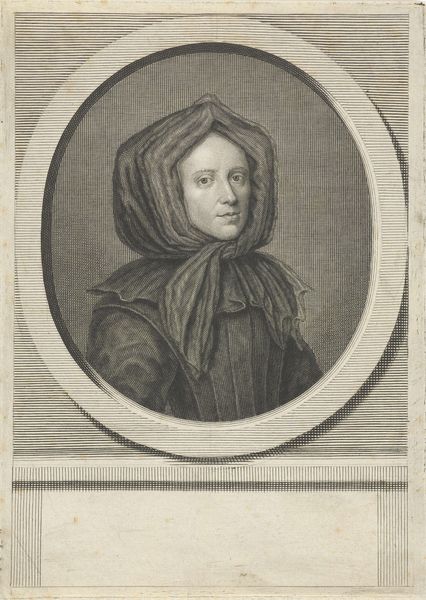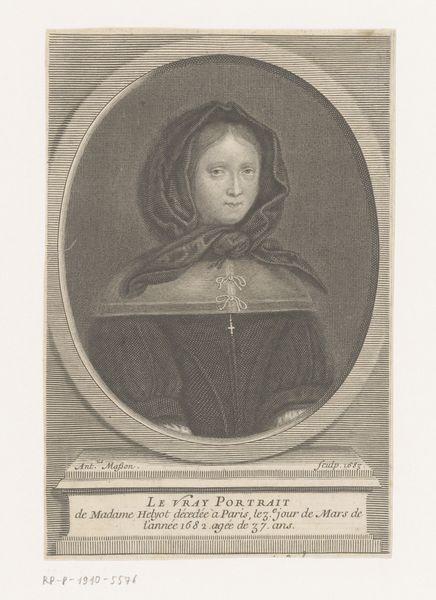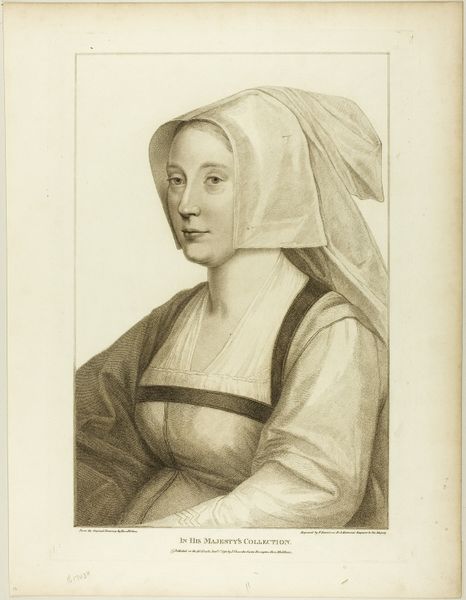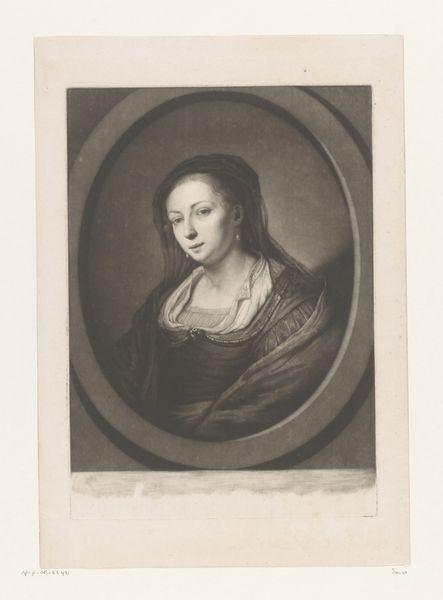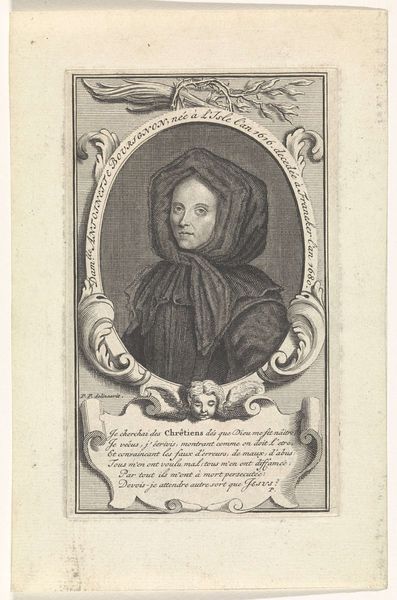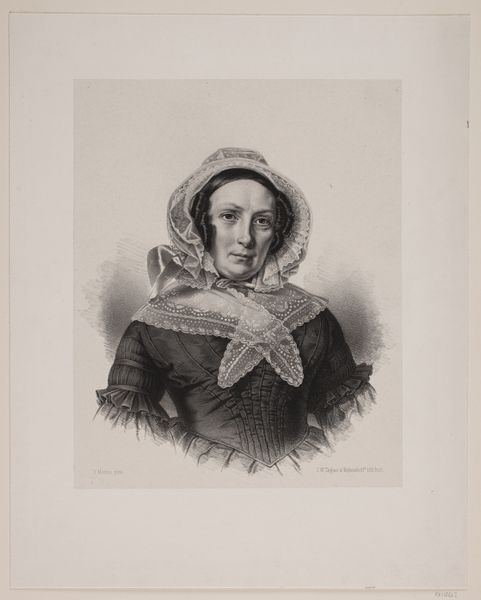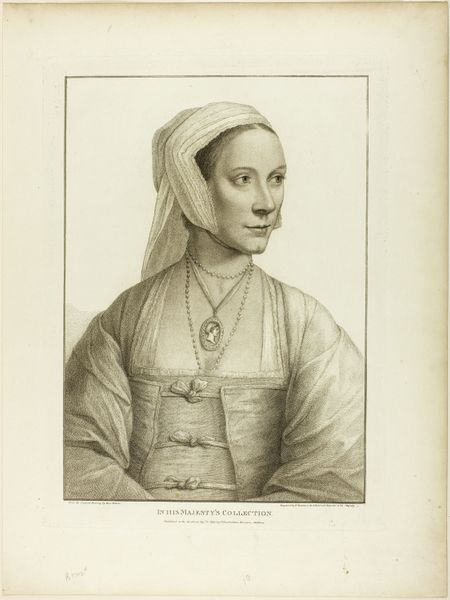
engraving
#
portrait
#
baroque
#
old engraving style
#
history-painting
#
engraving
Dimensions: width 195 mm, height 243 mm
Copyright: Rijks Museum: Open Domain
Curator: Looking at this print, a portrait of Antoinette Bourignon held here at the Rijksmuseum, dated from 1680 to 1731, what's your first impression? Editor: She looks almost monastic, severe but composed. The framing feels restrictive, almost like she's trapped within the oval. The tonality is cool and muted. Curator: Indeed. Pieter van Gunst created this engraving during the Baroque period, and it adheres to many of its conventions. However, Bourignon herself was far from conventional. She was a mystic and writer known for her unconventional spiritual beliefs. Editor: The seriousness then reads differently. It suggests strength, conviction. Is the plainness of her garb symbolic? Curator: Absolutely. Bourignon rejected religious dogma in favor of a personal, emotional connection with God. Her clothing rejects any form of superficiality or vain display and her insistence on simplicity reflects that ethos. It signals a break from traditional social hierarchies of the era too. Editor: And the lack of adornment focuses all the attention on her face. It’s an intelligent face. I wonder about the cultural memory of such images: were prints like this intended to disseminate her beliefs, or to document her persona? Curator: Both, perhaps. Prints like these had multiple purposes. Certainly they spread her image and ideas among her followers but, importantly, it helped to establish her place in intellectual history, making her accessible to a wider, potentially critical, audience long after her death. They shape how she would be remembered, even debated, throughout time. Editor: The fact it’s an engraving, allowing for mass production, underscores the intention of broader access to her image. How was Bourignon's unusual approach received during the Baroque era, when both religious and artistic expressions were heavily codified? Curator: Often met with condemnation. She was considered a heretic by many, yet her ideas attracted a significant following across Europe. So the image serves a dual function. A document of a unique figure, but also propaganda to her adherents and, perhaps, a warning to others. Editor: It’s interesting to consider how visual representation intertwines with belief and reception across different periods of history. These simple lines and tones give me such food for thought. Curator: Indeed. I find the artwork helps reflect how individuals can resist through images to express their ideologies.
Comments
No comments
Be the first to comment and join the conversation on the ultimate creative platform.
